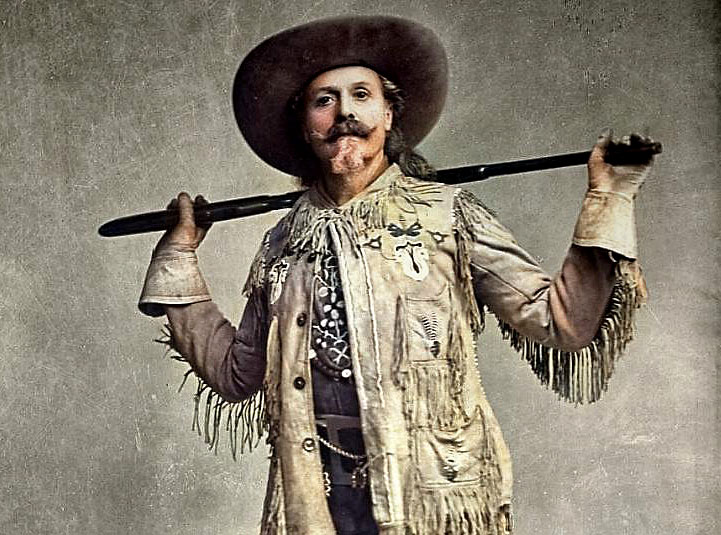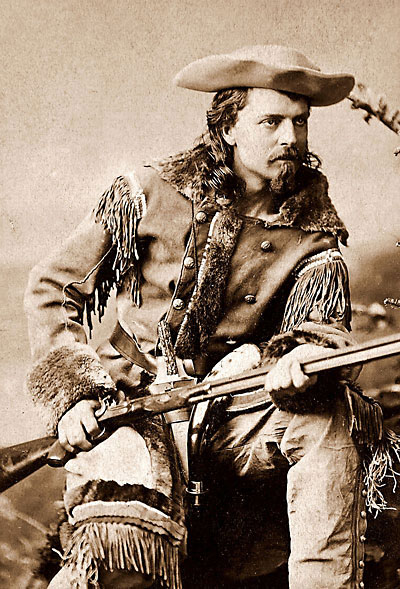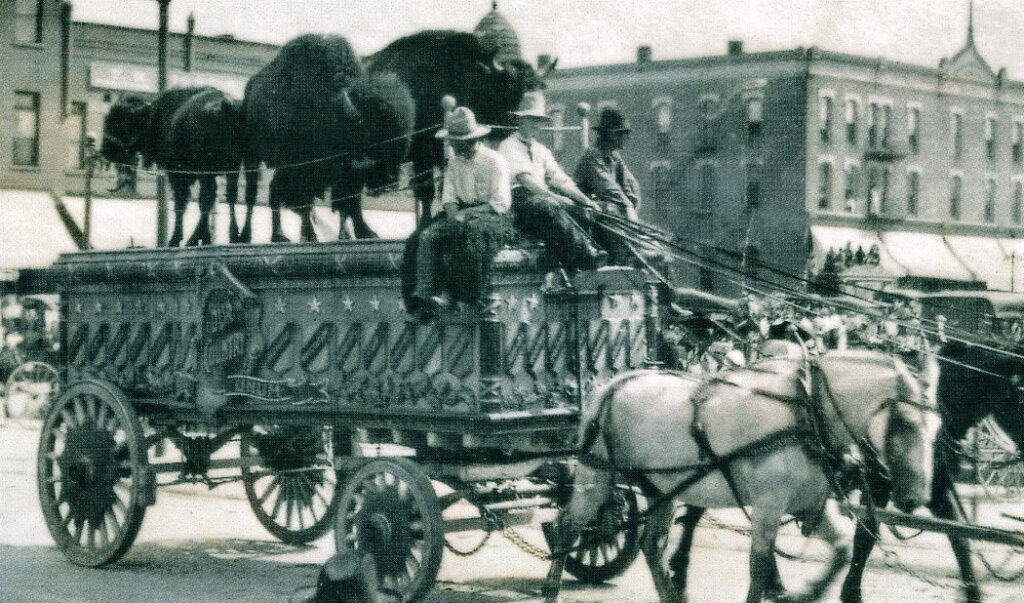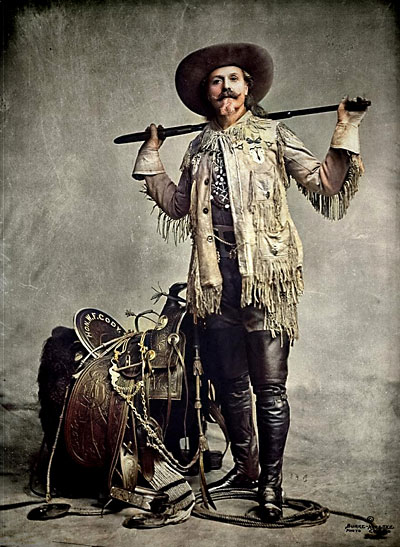
Iowa-born Wild West showman William Frederick Cody, famously known as Buffalo Bill, was fortunate not to have witnessed the final years of World War I. He died on January 10, 1917, in Denver, Colorado, at age 70. His funeral was a major news event, as admirers worldwide mourned his passing. Ironically, despite the ongoing conflict, condolences for his death were sent by both England’s King George V and Germany’s Kaiser Wilhelm II.
Cody’s death was undoubtedly fresh in American minds on March 6, 1917, less than two months after the funeral. On that day, according to an article in the Marshalltown Times-Republican, a group of Iowa youngsters who were walking down the street in Cedar Falls had the strangest encounter of their lives. For a moment, they saw walking toward them a living, breathing Buffalo Bill.

Five years earlier, on August 31, 1912, Buffalo Bill’s Wild West extravaganza had performed in Cedar Falls. His crew had set up their arena on the city’s northwest corner, in Mullarkey’s Pasture (near what is now called Riverview Park). Now, in 1917, the youngsters were sure it was Buffalo Bill who was walking toward them on the street. As described by the Marshalltown news story, this man—the same height as Buffalo Bill—had Cody’s “flowing hair, moustache, goatee, big sombrero, and cowboy boots,” even his famous baby-blue eyes. What a shock! “Look, fellers,” cried out one of the youngsters, “Buffalo Bill ain’t dead!”
In the end, it was all an innocent error—of sorts. The man walking toward them was indeed a “dead ringer” for Cody, a native of Le Claire, Iowa. But he was a performer and a long-time friend of the showman, a man named Curt L. Alexander from Hastings, Nebraska. Originally from Leon, Iowa, Alexander was traveling by train back to Hastings from Chicago, and decided to stop over in Cedar Falls to visit his Iowa nephew, a downtown clothing merchant named Lloyd Alexander.
The youngsters could hardly be faulted. They were certainly not the first to mistake Curt Alexander for Bill Cody. Earlier news stories had reported on a trip that Alexander had made to the East Coast about 10 years before. There, “he was greeted everywhere as Buffalo Bill and in Boston the newspaper men declined to accept his assertion that he was not.” The same thing happened in St. Joseph, Missouri. As noted in the Nebraska State Journal in 1909, “Mr. Alexander bears a strong resemblance to Colonel Cody and has often been mistaken for him by intimate friends of Mr. Cody.
At times, it may have been purposeful for Alexander to be mistaken for Buffalo Bill, because he was then able (as were several others) to step in as Cody’s double. As the hero aged, there were rumors that he had found it an increasing challenge to mount his horse, much less to ride around waving his hat.

As was standard for the Wild West’s traveling agenda, Cody appeared in a number of Iowa towns in 1912, including Muscatine, Iowa City, Decorah, Dubuque, Cedar Falls, Webster City, and Sioux City. My father attended the show in Decorah that year, when he was 11 years old.

In Cedar Falls, a resident named Stella Wynegar drove out to the grounds in a buggy to pick up her son Claud, who had attended the performance. She recalled that as they “were wandering around. . . . Buffalo Bill came up and talked with us. He asked about our family and told us about his life and where he’d been. He was very interesting and nice.”
That same day, presumably, another Cedar Falls resident, a girl whose family lived on West First Street (near the performance location) was sitting outside when Buffalo Bill “came walking along and saw the chickens in our yard. He offered my grandma $1.50 [equal to $40 today] to cook a chicken dinner for his troupe and she did it!”
To be truthful, not all the Midwestern engagements of the Wild West were free of controversy. The most egregious example occurred in Prairie du Chien, Wisconsin, on the night of August 20, 1900. At the end of two hot summer shows, a number of Cody’s performers gathered to drink and play cards at a bar. They started a tab, but the bartender grew impatient when they were indifferent to paying. He threatened them with a pistol, and they grabbed the gun and attacked him. The ruckus attracted attention, and a local armed policeman arrived and threatened to detain everyone.
In response, the cowboys went after the lawman, who fled down the street, then suddenly turned and fired a shot that struck a cowboy in the arm. With that, a riot of sorts ensued, with Cody’s cowboys up against angry townspeople. As violence and property damage increased, someone sent a telegram to the governor of Wisconsin, who wired Cody in return, theatening to send in the National Guard.
Unaware of all the commotion, Buffalo Bill had retired for the night. After reading the wire, he strapped on two loaded pistols, and shouted angrily, “Get my horse!” Arriving in town, he used a whistle to summon his men and ordered them to fall into formation. Then, as if nothing had happened, he marched them silently back to the grounds.
By daybreak the following morning, the Wild West troupe had disappeared—it had quietly moved on to the next town on its schedule.
Roy R. Behrens is Emeritus Professor and Distinguished Scholar at the University of Northern Iowa. For more of his writings, see BobolinkBooks.com/BALLAST.
